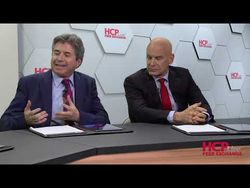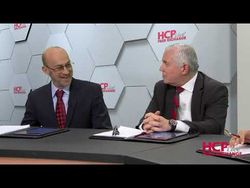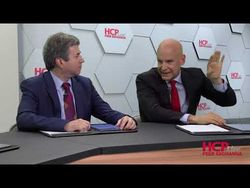Reducing Risk in Cardiovascular Events - Episode 4
The Importance of Lp(a) Screening
Deepak L. Bhatt, MD, MPH: In terms of screening, of course LDL [low-density lipoprotein] cholesterol is kind of obvious. What about Lp(a) [lipoprotein(a)]? Not to confuse the audience with stuff, but the European guidelines did come out and say everybody should have Lp(a) measured at least once in their life.
Michael Miller, MD: I’m a big fan of Lp(a), and we identified and just published recently, the youngest person, as we far as we know, she was 27-years-old and smoked a couple cigarettes a day, LDL levels in the 120—140 range, but she had an Lp(a) which should be less than 75 nmol/L, it was over 500. And she ended up having an MI [myocardial infarction] and bypass surgery at age 27. So there are unquestionably a lot of physicians who have not been screening for high Lp(a), and I think it’s really important patients or families who have premature disease, and you can’t explain the extent of disease based on the risk factors.
Steven E. Nissen, MD: Some of the nihilism comes from the fact that historically we didn’t have any good ways to treat it, but that’s about to change. Christie is well aware of this, but we’re about to launch a very large clinical trial with an antisense oligonucleotide that lowers Lp(a) about 80%, and we’re going to enroll the first patient in December 2019.
Deepak L. Bhatt, MD, MPH: Right around the corner.
Steven E. Nissen, MD: There are 1000 sites in 48 countries. Let me make a point about Lp(a). Nobody is measuring it. I’ve done grand rounds at various places around the country. I did it. I won’t mention the institution—a very famous institution in America, not yours. I asked for a show of hands. We had about 150 people in the audience at grand rounds, how many of you ordered an Lp(a) in the last month? Three hands went up, and I was shocked because we measure it in every single patient in our prevention clinic and have for more than a decade. There are 1.4 billion people on the planet Earth who have an Lp(a) above 60 or 70 nmol/L. This is an incredibly prevalent disorder, and it’s not being identified because it can’t be treated. That’s going to change. When that changes, we’re going to have to educate everybody about it.
Deepak L. Bhatt, MD, MPH: I know all of you are big believers in it, but do you believe with the ESE [European Society of Endocrinology Clinical Practice] Guidelines that it was not just high risk. They said all people should have Lp(a) measured at least once. Do you agree?
Christie M. Ballantyne, MD: I think it’s reasonable to do this because basically, we’ve already talked about how the major theme or problem with prevention is too little too late. It’s a little bit for me. I was really young. I was still a resident and loved it; the patient would get admitted. MIs, they’d be hypotensive. We would take them to the ER [emergency department], take them up and do all the drips, and manage the patients, but we just were watching a natural history. We’d listen to everybody. Did they get a VSD [ventricular spinal effect]? OK, let’s go to the OR [operating room]. But it really wasn’t. This shows my age; it was pre-lytics, pre-PCI [percutaneous coronary infection]. I realized all we’re doing is creating symptoms. We’re not treating the disease process of atherosclerosis. We’re much better now with our early interventions, but still many people don’t treat the disease process. It’s a little like being a fireman. When a fireman comes in and rescues somebody on the second floor or third floor and brings a child out, it’s wonderful. But the building has already been burned to the ground and people are dying.
As a preventive cardiologist, it’s more like putting smoke alarms in the house, making sure things are designed well in the kitchen. It’s boring. It’s not dramatic, but you prevent far more lives in fires by good design and prevention than you do by catastrophically coming in at the last second. I’m in an institution that has a wonderful history for heart transplants and VADs [ventricular assist devices] and things like that, and it’s heroic and it’s wonderful for the patients. But we ignore the early part. If you get a high Lp(a), even if we don’t have a specific therapy, you know they’re at increased risk. Some diet and exercise, they do work. And that patient needs to not smoke, blood pressure control, lipid control. Statins shown in JUPITER are primary prevention.
Steven E. Nissen, MD: Take everything else off the table.
Christie M. Ballantyne, MD: Still works. The other things all benefit. It’s useful to get, and I think we should empower our patients. If someone knows they’re at increased risk, and you said, “Steve, it’s very common.” We’re doing right now genomic. We’re giving a battery to 1000 people in our cardiology clinic. They are going to get a gene panel, 158 genes sequenced. They get a polygenic risk score, they get Lp(a) variance, they have pharmacogenomics. And the most common thing coming back is Lp(a) variance, because that’s people who are coming in. It’s bewildering our cardiologists genome.
James A. Underberg, MD, MS: Two other important factors of this are that 1) Lp(a) is a confounder for impaired response to statins. A lot of times we see patients coming to us and say, “Statins don’t work for me.”
Steven E. Nissen, MD: Or they’re statin resistant is what we hear.
James A. Underberg, MD, MS: The first thing we do is we check their lipoprotein(a) because statins don’t lower lipoprotein(a) and probably raise it slightly. The second is it’s a confounder for hypercholesterolemia. If your Lp(a) is elevated, your LDL is elevated, and often it is confused with familial hypercholesterolemia and seen more often in familial hypercholesterolemia. Those are other reasons to know about it. I understand some of the reasoning about why, say, the National Lipid Association did not recommend doing it in everyone, and the answer was that there are some people who have high Lp(a) who never have a problem. Especially in younger kids and younger people without family history, the concern was where we go with that. But with the evolution of therapeutics and clinical trials, I think we’re moving in a direction where the European recommendations are reasonable.
Transcript edited for clarity.



